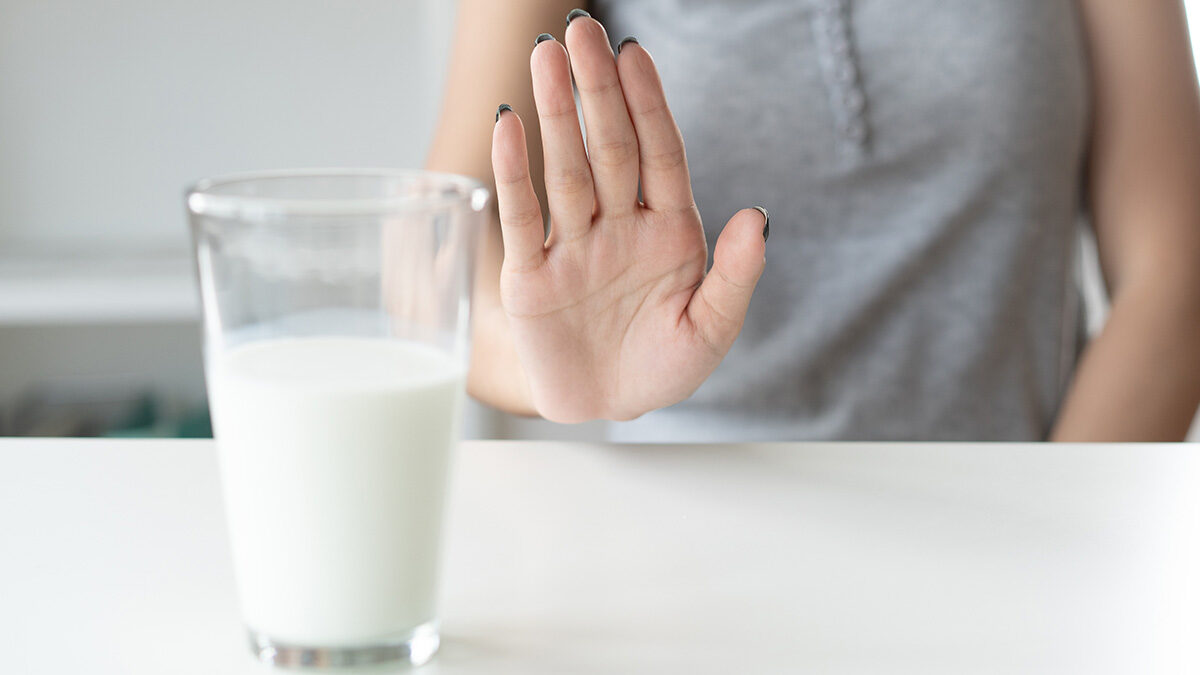The National Dairy Council denies that milk intake causes acne, but a study they supported—the Harvard Nurse’s Health Study—found otherwise, as I show in my 3-min. video National Dairy Council on Acne and Milk. The conclusion reads: “We found a positive association with acne for intake of total milk and skim milk. We hypothesize that the association with milk may be because of the presence of hormones and bioactive molecules in milk.”
Association does not necessarily mean causation, though. From the accompanying editorial in the Journal of the American Academy of Dermatology:
“The papers…from the Harvard School of Public Health establish an association between milk consumption and acne. But how could milk cause acne? Because, drinking milk and consuming dairy products from pregnant cows exposes us to the hormones produced by the cows’ pregnancy, hormones that we were not designed to consume during our teenage and adult years. It is no secret that teenagers’ acne closely parallels hormonal activity…So what happens if exogenous hormones are added to the normal endogenous load? And what exactly is the source of these hormones? Consider that, in nature, milk is consumed from a mother, whether human or bovine, until weaning occurs. Normally, the mother then ceases lactation before the next pregnancy occurs—so that consuming milk from a mother pregnant with her next offspring is not a common occurrence. We’ve all seen nature films of animals chasing their offspring away to encourage weaning at the appropriate time. Further, in nature the offspring consumes only the milk of its own species—but both of these natural rules are broken by humans. Viewed objectively, human consumption of large volumes of another species’ milk, especially when that milk comes mainly from pregnant cows during the human’s normally post-weaned years, is essentially unnatural.”
The Harvard Nurse’s Health Study found that the association between milk intake and severe physician-diagnosed teenage acne was even more marked for skim milk.
Milk—organic or conventional—is naturally a hormone cocktail. This is not a consequence of bovine growth hormone injections or added steroids. As a commentary in the Journal of the American Academy of Dermatology noted: “It should surprise no one that milk contains such a heavy complement of growth-enhancing hormones. Milk is, after all, specifically designed to make things grow.”
As detailed in my 2-min. video Skim Milk and Acne, further studies of both adolescent girls and boys found a similar link between milk intake and acne, but pimples may be the least of our worries. The latest published update suggests that the restriction of cow’s milk consumption could have a beneficial effect on more serious epidemic diseases. Quoting from the review (in my 2-min. video Acne-Promoting Effects of Milk):
“By million years of evolution the growth signaling system of mammalian milk is exclusively and physiologically provided to the newborn only during the nursing period. The chronic ‘abuse’ of this mammalian postnatal signaling system by widespread cow milk and dairy consumption in humans of industrialized societies has been proposed to be the major cause of the acne epidemic and the more serious chronic western diseases.”
There’s lots of diseases associated with unrestricted growth. So what should we do? The research scientists suggest two solutions to the problem: the restriction of milk consumption or the engineering of milk that doesn’t have these adverse effects. Either way, “Both, restriction of milk consumption or the generation of less insulin affecting milk will have an enormous impact on the prevention of epidemic western diseases like obesity, diabetes mellitus, cancer, neurodegenerative diseases” and acne.
–Michael Greger, M.D.
